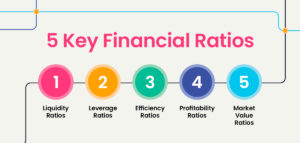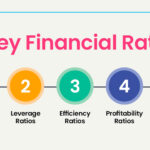Maintaining accurate financial records is essential for SMEs to improve credit risk scores. Regularly update your balance sheets, cash flow statements, and profit and loss statements to provide a clear picture of your financial health. Use accounting software to track expenses and income accurately, reducing the risk of errors.
Timely regulatory compliance and payments are also crucial. Paying loans, credit cards, employee dues, and taxes on time prevents late payment penalties and maintains your creditworthiness. Adhering to regulatory requirements showcases your reliability to lenders and can secure better loan terms.
Lastly, leverage technology to enhance credit risk management. Utilize AI for thorough credit checks, automate compliance processes, and implement machine learning for predictive analytics. These tools provide precise insights, helping to prevent bad debt and ensure effective credit management. Follow these best practices, and your SME will be well-positioned to improve its credit risk score.
How Do Smes Maintain Accurate Financial Records To Improve Credit Risk Scores?
Maintaining accurate financial records is crucial for SMEs to improve their credit risk scores. Here’s how you can do it:
First, keep detailed records. You should regularly update your balance sheets, cash flow statements, and profit and loss statements to ensure a clear picture of your financial health.
Second, always make timely payments on loans, credit cards, employee dues, and statutory obligations like taxes. Late payments can harm your credit score.
Third, organize your documentation. Maintain correct legal identity and contact details across all statutory databases and ensure timely filings with regulatory authorities like the Registrar of Companies.
You should employ accounting software to track expenses, income, and invoices. This reduces errors and ensures your financial data is accurate and regularly updated. Also, regularly check your credit reports and scores to identify and rectify any discrepancies promptly.
Familiarize yourself with loan application requirements and ensure your financial records meet lender expectations. Spread your credit sources to avoid over-dependence on a single lender and reduce concentration risk. Lastly, leverage technology like AI and data analytics for better credit risk assessment and management.
Finally, by keeping detailed records, making timely payments, organizing your documentation, and using technology and accounting tools, you can enhance your financial stability and improve your SME’s credit risk scores.
What Are The Key Financial Indicators That Affect An Sme’S Creditworthiness?
To determine a small and medium-sized enterprise’s (SME’s) creditworthiness, you should focus on these key financial indicators:
First, consider the Debt-to-Equity Ratio. This shows how much debt your business uses compared to equity. A high ratio can indicate higher risk due to heavy reliance on debt.
Next, look at the Current Ratio. This measures your ability to pay short-term obligations with short-term assets. A higher current ratio often signals better liquidity and financial health.
Then, examine the Interest Coverage Ratio. This assesses how easily your business can pay interest on its outstanding debt. A higher ratio implies better financial stability.
Don’t overlook Operating Cash Flow. This shows how much cash is generated from your business operations, indicating immediate liquidity and cash availability.
You should also pay attention to Revenue. High revenue reflects good market performance and financial potential.
Another crucial factor is your Credit History. A solid history of timely loan repayments and good credit scores can greatly improve your creditworthiness.
Collateral is another important aspect. Having assets to secure the loan, such as real estate, lowers perceived risk for lenders and can lead to favorable loan terms.
Profitability metrics like Return on Equity (ROE) and Net Profit Margin show your business’s ability to generate profit from its operations.
Regulatory Compliance is essential. Adhering to relevant regulations and standards avoids legal penalties and enhances business reputation, reducing credit risk.
Understanding your Industry Position helps assess future performance. Companies in growing markets often have better credit prospects.
Finally, consider Management Quality. A strong management team with a track record of successful operations is often seen as a lower credit risk.
In closing, focus on metrics like debt-to-equity ratio, current ratio, and operating cash flow to gauge creditworthiness. Your credit history, collateral, and management quality also play key roles. These indicators collectively determine your SME’s financial health.
How Does An Sme’S Operational Efficiency Influence Its Credit Risk Score?
An SME’s operational efficiency significantly influences its credit risk score. When you use resources well to produce goods or services, it reflects financial stability, which lenders love.
Efficient operations positively impact key financial indicators like debt-to-equity ratio, current ratio, and interest coverage ratio. By maintaining lower debt levels and healthier cash flows, you show better financial health, leading to a favorable credit score. Effective operational efficiency helps you manage resources, support better cash flows, and maintain healthy financial ratios, ultimately lowering your credit risk score.
Non-financial factors also play a role:
- A robust business model boosts reliability.
- Skilled management ensures well-handled operations.
- Efficient production processes cut costs and raise profitability.
If you run your business efficiently, you’ll improve your financial stability and make it easier to meet obligations, which positively affects your credit risk score.
Overall, by highlighting your operational efficiency, you demonstrate financial health, bolster management reputation, and enhance profitability, which are key for achieving a favorable credit risk score.
Why Is Timely Regulatory Compliance Important For Smes’ Credit Risk Management?
Timely regulatory compliance is crucial for SMEs’ credit risk management because it helps you avoid legal issues and maintain a good reputation. If you comply with regulations on time, you avoid fines, penalties, and legal problems that could hurt your credit score. Banks and lenders look at your compliance history to gauge reliability. A track record of timely compliance can help you secure better loan terms and lower interest rates.

Furthermore, timely compliance keeps your operations transparent and lawful, making your business attractive to stakeholders and investors. It helps maintain stable cash flow by avoiding unexpected legal setbacks. This stability is vital for SMEs, which often have limited resources and cannot afford financial disruptions. By staying compliant, you show that your business is well-managed and trustworthy, improving your chances for funding and growth.
As a final point, timely regulatory compliance not only shows that your business is reliable and well-managed but also significantly enhances your credit risk management, making it easier to secure funding and grow your business.
How Can Smes Effectively Use Collateral To Mitigate Credit Risk?
You can effectively use collateral to mitigate credit risk by following these steps:
Identify valuable assets, like property, equipment, or inventory, that you can use as collateral. You need assets that are valuable and easily convertible to cash.
Understand the lender’s requirements. Each lender has specific types of collateral they accept and their own valuation processes. Make sure you know these details before offering assets as collateral.
Clear documentation is crucial. Ensure you have legally binding documents for your collateral, including proper valuation reports and proof of ownership.
Maintain asset quality to retain their value. Regularly update and take care of the assets you are using as collateral. This can boost your credibility with lenders.
Mitigate market risk by diversifying the types of collateral you use. This reduces the risk if one asset type depreciates.
Use collateral strategically to negotiate better loan terms. Strong collateral can help you secure lower interest rates, higher loan amounts, or longer repayment terms.
Monitor loan terms and conditions closely. Make sure you meet all covenant requirements and avoid actions that could devalue the collateral or complicate retrieval in case of default.
To sum up, by selecting and maintaining your collateral carefully, you can reduce lenders’ perceived risk, making it easier to secure loans with favorable terms.








